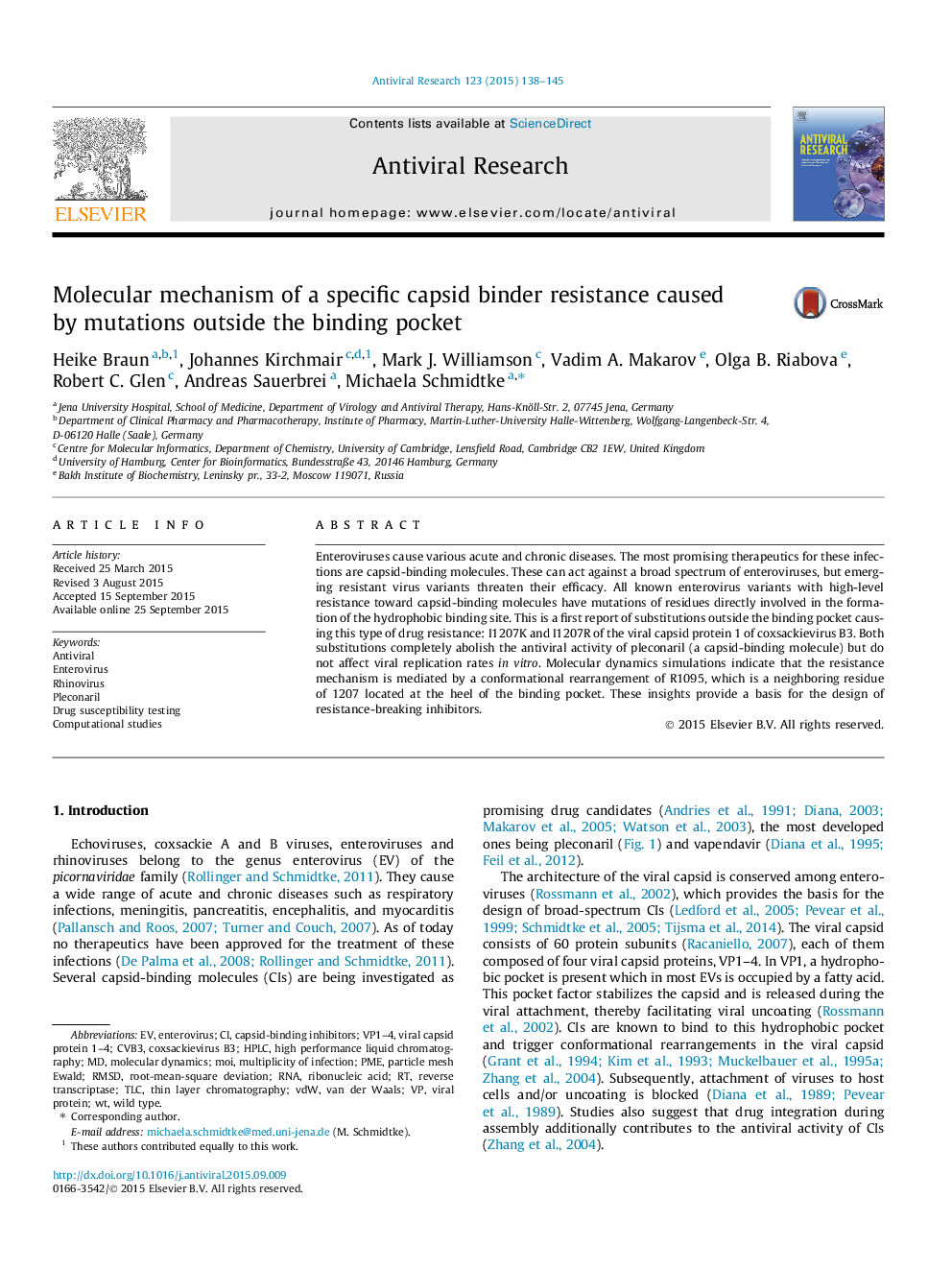| Article ID | Journal | Published Year | Pages | File Type |
|---|---|---|---|---|
| 2509774 | Antiviral Research | 2015 | 8 Pages |
•Single-site mutations cause high-resistance (HR) to capsid-binding inhibitors.•Two new HR amino acid substitutions were identified in viral capsid protein 1.•I1207K and I1207R are located outside the ligand binding site.•Both substitutions push the neighboring R1095 into the hydrophobic pocket.•This ultimately leads to the abolishment of drug action.
Enteroviruses cause various acute and chronic diseases. The most promising therapeutics for these infections are capsid-binding molecules. These can act against a broad spectrum of enteroviruses, but emerging resistant virus variants threaten their efficacy. All known enterovirus variants with high-level resistance toward capsid-binding molecules have mutations of residues directly involved in the formation of the hydrophobic binding site. This is a first report of substitutions outside the binding pocket causing this type of drug resistance: I1207K and I1207R of the viral capsid protein 1 of coxsackievirus B3. Both substitutions completely abolish the antiviral activity of pleconaril (a capsid-binding molecule) but do not affect viral replication rates in vitro. Molecular dynamics simulations indicate that the resistance mechanism is mediated by a conformational rearrangement of R1095, which is a neighboring residue of 1207 located at the heel of the binding pocket. These insights provide a basis for the design of resistance-breaking inhibitors.
